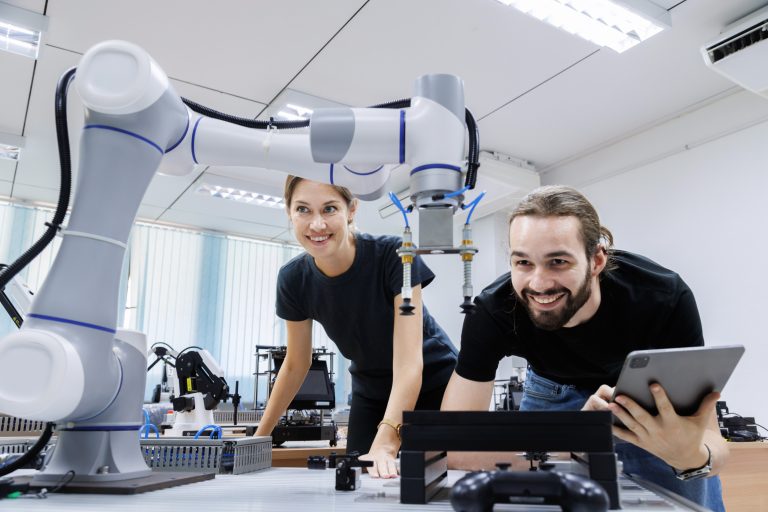In the dynamic field of robotics, the ability to efficiently map and design complex systems is paramount. Robotics engineers rely on a suite of specialised tools to streamline their workflows, allowing them to achieve optimal results and improve efficiency and performance. In this article, we will delve into five essential tools that every robotics engineer should be familiar with for projects of any size.
CAD software for robot design
CAD design software is the cornerstone of robot design, providing a virtual workspace to create, modify, and visualise robotic systems. The importance of using CAD software cannot be understated, as it supports engineers through complex designs and mechanical movements that are specific to robotics.
These tools offer a range of features, including 3D modelling, assembly, and kinematic analysis. By utilising CAD software, engineers can meticulously design every component of a robot, from its mechanical structure to its electrical and control systems. Some of the most popular CAD options for robotics include SolidWorks, Autodesk Inventor, and FreeCAD.
Simulation software for robotics prototyping
Before committing to physical prototypes, robotics engineers often employ simulation software to test and refine their designs. These tools create virtual environments where robots can interact with their surroundings, allowing engineers to identify potential issues and optimise performance.
Simulation software can simulate various factors, such as dynamics, kinematics, and control algorithms.
SLAM tools for mapping environments
Simultaneous Localisation and Mapping (SLAM) is a critical task in robotics, enabling robots to build maps of their environments while simultaneously determining their own location within those maps.
SLAM algorithms leverage sensors such as LiDAR, cameras, and sonar to create accurate and detailed representations of the surrounding space. Popular SLAM frameworks include ROS (Robot Operating System), Google Cartographer, and ORB-SLAM.
Sensor integration and data analysis tools
Robotics often involve the integration of multiple sensors to gather comprehensive information about the environment. Sensor fusion techniques combine data from various sources to create a more accurate and reliable perception.
Tools like ROS and MATLAB/Simulink are widely used for sensor integration and data analysis. They provide libraries and algorithms for sensor calibration, data filtering, and feature extraction.
Collaborative cloud-based design platforms
In today’s interconnected world, collaboration is essential for successful robotics projects. Cloud-based design platforms enable teams to work together seamlessly, regardless of their physical location. These platforms offer features such as version control, real-time collaboration, and cloud-based simulation. Examples of collaborative platforms include Onshape, Autodesk Fusion 360, and GitHub.
By mastering these key tools, robotics engineers can significantly enhance their efficiency and effectiveness in mapping and design. The combination of such tools and software can empower engineers to create innovative and robust robotic systems that meet the demands of the modern world.


